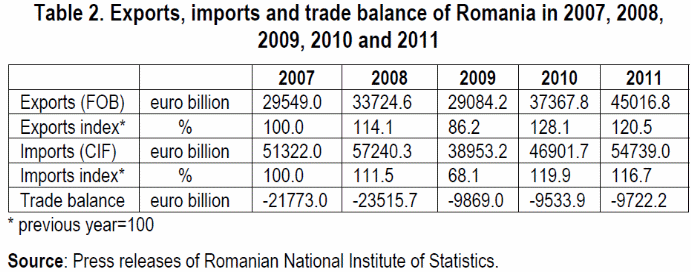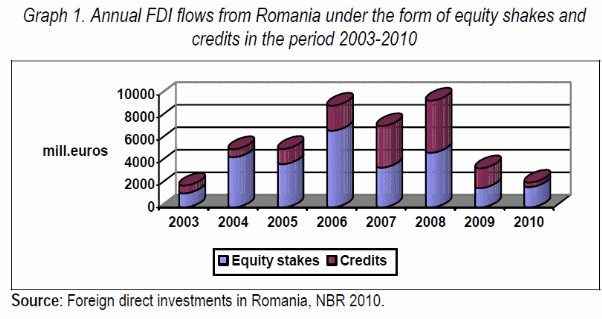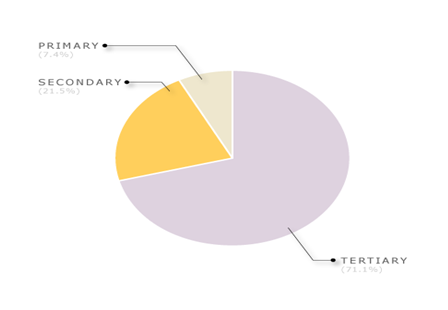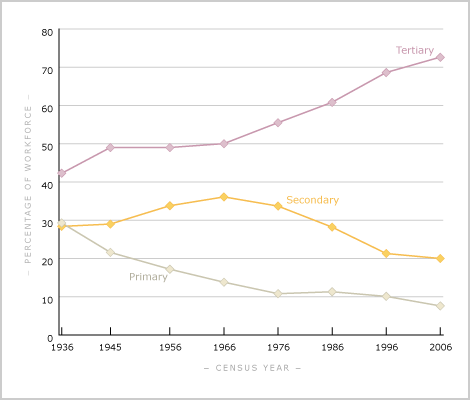Basic data and statistics about Romania
Historical perspective of this country
Romania is a country in Southeastern Europe that borders Black Sea. To the west, it borders with Serbia and Hungary, to the east, it borders Moldova and Ukraine, and to the south, it borders Bulgaria (Demekas, 1991). It is the seventh largest country in European Union in terms of population, which is estimated to be 20,121,641 people.
The country’s GDP was estimated to be $274 billion in the year 2012. In the same year, unemployment in this country was estimated to be 5%. Despite this low rate of unemployment, income distribution is still skewed, with a few members of the society being very rich, while the majority controls minimal wealth of the country. The country joined European Union in January 2007.
As Turnock (2000) notes, Bucharest, the capital city of this country, is ranked as the sixth largest city in Europe. The country gained independence from the Ottoman Empire in 1877. It formed a union in 1918. After the Second World War, the military took over the country’s leadership until the Romanian revolution of 1989. Since then, the governance of the country has been through democracy.
Turnock (2000) describes Romanian economy as “A developing, upper-middle income market economy, the 11th largest in the European Union by total nominal GDP and the 8th largest based on purchasing power parity.” The economic recession of 2009 forced this country into budget deficit, a fact that saw it borrow money from World Bank and International Monetary Fund.
In 2010, the country’s export increased by 13%, reducing the budget deficit that had been experienced in the previous years. Romania has a comparative economic advantage in this region. The country has expanded the clothing and textile industry that has increased its exports regionally. The table below shows Romanian imports, exports, and trade balance in percentage from 2007 to 2010.

Demographical factors
According to the most recent census done on 2011, the population of Romania is 20,121,641 people. Because of the negative net migration rate and low birth rate, the country’s population is expected to decline. Majority of the population are the native Romanians accounting for about 88.7%.
The significant minorities include the Hungarians and the Roma. Roberts (2013) notes that birth rate in this country is estimated to be 9.50% while death rate is 11.85% according to the statistics conducted in 2012.
The rate at which people are dying is much higher than the rate at which live births take place. This country has started experiencing a shrinking population. Life expectancy in this country based on the 2012 statistics is 74.45%. Life expectancy of women is higher than that of men.
Fiscal Policy
The country’s fiscal policy has undergone transition over the past decades, especially after the end of the dictatorial rule in 1989 (Demekas, 1991). The government changed from its progressive taxation system to flat tax of 16% for corporate profit and personal income. Government expenditure has also increased in the recent past.
Romanian government has established various ways of funding its expenditures. According to Roberts (2013), the main source of income for this country in 2012 financial was through taxation. Other major sources of income include internal and external borrowing, use of fiscal reserves, and sale of some of its fixed asset.
Although the government has always tried to reduce external borrowing, it was forced to source for external funds in 2009 by borrowing from World Bank and International Monetary Fund to cushion its economy from the impact of the recession (Light, 2012).
Monetary policy
The government of Romania has been very keen on managing the supply of money in its economy. The Romanian government has developed policies that would allow for an acceptable amount of money to flow into its economy as a way of encouraging economic growth. It has done this through its Central Government (Ploaie, 2006).
The Central Government would increase its lending rates to commercial banks when there is need to reduce the flow of cash into the economy. This would discourage borrowing. It would reduce this rate when there is need to motivate investment in the country. Availability of money in the economy is one of the factors that motivate economic growth through business expansions.
When investors have easy access to the capital market, then local investment would boom. During the 2008-2009 economic recession that hit the world, especially the United States and parts of Europe, the government was forced to increase the amount of money flowing into its economy as a way of boosting economic growth.
There was a need to rescue some firms that were worst affected by the recession, and this could only be achieved by increasing their capacity to access money.
The country’s decision to increase the amount of money in the economy was also guided by the need to increase expenditure among its populace. This strategy worked. The government has also been using monetary policy to regulate amount of money flowing in the economy as a way of avoiding a possible inflation in its economy.
Foreign Direct Investment
According to Light (2012), the country has experienced reduced foreign direct investment over the past two years. The graph below shows changes that have been witnessed in foreign direct investment for from 2003 to 2010.

It is clear from the graph above that from 2003 to 2008; there was a steady increase in foreign direct investment. However, there was a significant drop in 2009, with the figures in 2010 showing a further reduction.
Government Expenditure
The government has several areas of expenditure that it has to observe in order to operate optimally. The graph below shows some of the major areas of expenditure for this country based on the first quarter of the country’s fiscal year.
It is clear that the highest percentage of government spending goes to the compensation of its employees in various sectors. It is important to understand some of the major sectors of the economy that the Romanian government be forced to spend on.
Military
Romania has a relatively lean military, especially after the military governance was brought to an end. The country has about 100,000 people in the military, out of which 15,000 are civilians serving in various capacities within the military.
According to the reports by Light (2012), the 2007/2008 budget of this country, military expenditure for this country accounted for about 2% of the of the country’s total national gross domestic product (GDP). This amounts to US$2.9 billion. The recent purchase of heavy military equipment country increases this percentage.
Education
The education system of this country has been in continuous reform process for the past one decade. According to the estimates given by the Ministry of Education and Research, the country enrolled 650,000 learners into kindergarten, 3.12 million learners into primary and secondary schools, and 650,000 learners into tertiary level schools in 2004.
Most of the government expenditure in this department goes to payment of salary of the teachers. It has one of the highest number of employees per ministry. About 4.5% of the country’s expenditure goes to this ministry every year (Roberts, 2013). The regular review of the education system has also contributed to the increase of government expenditure in this department.
Healthcare
According to Sheehan (2005), Romanian government has established a universal healthcare system that ensures that every citizen of this country has access to quality medical care irrespective of their financial standings.
In the year 2012, the total expenditure in this department as reported by the Ministry of Health was €12 billion, which accounted to about 5% of the country’s GDP. Cardiovascular diseases have been the focus of research in this department.
The government has ensured that there are enough beds in most of the public hospitals to cater for the needs of its people. In the year 2012, the Ministry of Health reported that its staff population was 206,258 employees.
Environment
According to Light (2012), Romania has one of the biggest percentage of undisturbed forest in the world. This report indicated that this country is home to about 33,792 animal species.
The country has been committing a considerable amount of its resources towards protection of its environment. The highest of this percentage goes to the conservation of its 13 national parks that have always been closely protected by the state.
Specific Aspect of Romania’s Economy
Sustainable Rural Tourism in the Romanian Carpathians
David Turncock conducted a research in 1999 to investigate challenges that were affecting tourism industry in this country. The researcher believed that tourism is one of the economic main earners of the country. This research was therefore conducted to come up with a detailed finding of how to create sustainable development in this industry that will protect everyone who depends on it.
Hypothesis
In order to increase employment opportunities in the rural areas of this country, there is need to achieve sustainable development in the tourism industry.
The main way of achieving sustainable tourism is by protecting nature by reducing some of the industrial activities that affect the environment, and agricultural practices that promote encroachment into protected land areas.
By exploring these hypotheses, the author was interested in confirming them in order to offer appropriate recommendation to the government of Romania on the best approach it could take in defending this industry in order to increase its income, and promote creation of employment opportunities in the rural settings.
Dataset
The methodology in this research took the form of descriptive statistics. The researcher collected information from the available secondary sources of information in order to compile the report.
Data was collected from peer-reviewed journals that had focused in relevant areas in this topic as a way of coming up with findings that are valid. Given the magnitude of this study, the researcher used a univariate dataset. The findings were then analyzed and presented in a report format.
Findings
According to this article by Turnock (1999), the Romanian government has made massive steps towards elevating the living conditions of its populace. The government has made an effort to reduce unemployment in this country. The infrastructure has also been developed to attract tourists and to motivate development of other sectors of the economy.
As mentioned above, the country’s economy has been described as developing upper middle-income economy. It is important to mention that the country’s population has been experiencing negative growth over the years. A good percentage of Romanian nationals are immigrating to other European countries for various reasons.
With the shrinking population, it becomes difficult to get the appropriate human resource that can help in stimulating growth of tourism sector. This migration from this country has resulted into massive brain drain because most of those living the country have acquired some of the most important skills needed for the country’s development, especially in the tourism industry.
The government of Romania has developed programs, which are focused on attracting skilled labor into the country to help country the increasing emigration. The focus has been on stimulation growth of various sectors of the economy as a way of increasing creating jobs that would attract skilled labor into the local economy. The government has been keen to develop the three sectors of the economy.
In the primary sector, the government has heavily invested in agriculture and mining of minerals. In the secondary sector, there has been a massive government input in the development of the industrial sector. The government has develop government-owned industries to increase economic growth of the country and to boost employment.
It has also given incentives such as tax holidays, and ease access of the capital market to private investors in various industrial firms. In the tertiary sector, the Romanian government has been keen on motivating growth in various sectors. One such sector that has received massive support from the government is the tourism sector. The figure below shows the percentage employment opportunities offered by these three sectors.

The graph above shows that the primary sector accounts for the least percentage of employment opportunities in this country. It offers only 7.4% percent of the country’s total employment opportunities. Most of the people employed in this sector are farmers.
The secondary sector offers the second least employment opportunity at only 21.5% of the country’s total employment opportunity. Tertiary sector offers the highest percentage of the country’s total employment opportunity, at 71.1%.
The economic growth in this country has experienced some challenges, especially during the economic recession in 2009.
The Romanian government has developed programs to stimulate the economy in part to shut down emigration. The table below shows employment by sector over the past sixty years until 2006. It is clear that the tertiary sector has experienced consistent growth over the years. Tourism is the major player in this sector.

The figure above also shows that both the primary and secondary sectors of the Romanian economy have been experiencing a decline in the percentage employment opportunities over the years. The tertiary sector on the other hand experienced growth since 1936 to 1966 when this growth accelerated.
The tertiary sector has many subsectors that offer employment to varying degrees. One such sector that has received massive support from the government is the tourism sector. This scholarly article focuses on sustainable tourism development in this country.
Sustainable tourism development
Sustainable tourism has been defined in this article as conscious steps taken by the responsible stakeholders to develop tourism in a manner that protects its future. It is the process of ensuring that tourism is enhanced without jeopardizing other sectors of the economy, and without jeopardizing possibilities of future development.
According to this journal article, there has been an argument as to the best ways in which sustainable development can be achieved in this country. Tourism is one of the highest income earners in Romania, accounting for 4.8% of the country’s GDP. As noticed above, the tertiary sector offers the highest employment opportunity in this country.
Tourism has remained the dominant force in the tertiary sector. It is one of the dominant sectors in this country in terms in income generation and employment creation. Other sector such as hospitality industry also depends directly on the tourism industry for their growth and development. Enhancing sustainable development in this sector is therefore, core to achieving the desired success in the market.
Sustainable development of the tourism sector has raised a number of issues from various stakeholders. Some stakeholders have generally believed that the best way of achieving sustainability in this industry is by reducing some of the practices that pose serious threat to the environment.
These proponents have even suggested that faming should be reduced for increasing protected land area for development of nature. They have also suggested that other activities, especially the industrial activities that pose serious threat to the environment through industrial effluent should be reduced.
Other activities that encroach into the natural habitats such as logging, and excessive development of new roads should also be reduced in order to achieve sustainable development in this industry. The diagram below shows some of the activities that have direct impact on forest cover.

As demonstrated above, lumbering is one of the most common economic activities in this country. This scholar reports that the Romanian government cannot stop activities in this industry because the economy needs to run supported by some of its products.
However, lumbering has direct negative consequences on tourism. When logging is not controlled, it may lead to rapid depletion of the vegetative cover. It is also important to note that this industry uses exotic trees that have a shorter life span (Pettersen & Baker, 2010).
Some species of animals cannot survive in such new habitats. Logging reduces the natural habitat for both flora and fauna, which attracts tourists to this country. This affects tourism negatively because the country would have natural factors that would attract tourists. A way must be found to ensure that this industry do not affect tourism.
Tourism versus agriculture
There has been an argument as which of the two industries should receive maximum support from the government as a way of protecting the economy, and creating employment to the local populace. One section has supported tourism, while another section of the society that has believed that the best approach would be to develop the agricultural sector.
Both have valid arguments why they believe that these two industries should be developed. This country is currently importing some of the agricultural products from neighboring countries. This means that the agricultural sector has not been fully exploited. Those who support tourism say that agriculture has been poorly practiced in this country.
The cause of disagreement between these two differing forces is that both believe that there is unfair allocation of land. Both parties believe that their development is pegged on the ability to be assigned greater pieces of land. This research further confirms that land area put under agriculture has been underutilized.
This finding confirms the fact that this country can achieve success with its current percentage of land that has been set aside for agriculture. As mentioned earlier, death rate in this country has been confirmed to be lower than birth rate for the last six years consecutively.
The number of those leaving this country to other neighboring countries and to the United States is greater than the number coming into the country. The net effect of this is that the country is destined to have a serious reduction of its population in the next several years to come. This would reduce pressure on agricultural products in the domestic market.
Achieving sustainable rural tourism development
Sustainability has become an important issue in all industries in the current society. Sustainability starts by ensuring that the environment is made sustainable. Nature must be protected in order for it to sustain human life. This means that any economic activity that intends to protect the environment should be considered as a sustainable economic activity.
Long term planning in this industry must focus on protection of the environment. This research was able to confirm that other sectors of the economy have been given fair share of land. According to the research done by Pettersen and Baker (2010), agricultural sector in Romania has enough land area to produce agricultural products capable of meeting local demands.
This sector only needs to be restricted in a way that would improve its productivity. Lumbering as an economic activity also has enough land set aside for all its activities, and it has a capacity to meet and exceed local demands. This explains why it has enough to export to other countries in this region.
For these reasons, protected land areas meant to preserve flora and fauna of this country should be protected from any form of destruction. Tourism is one of the most sustainable economic activity for this country.
The current trends in this country have confirmed that this industry has increased employment opportunities in the rural settings of this country. The research by Pettersen and Baker (2010) shows that from 2006-2009, tourism one of the fastest developing sectors of economy in this country. The industry attracted investment to a tune of €400 million. This confirms the two hypotheses that were set for this research.
Conclusion
This research has given a detailed analysis of the Romanian economy, and some of the factors that have been done in the past to promote its growth. The economy of this country is considered as developing upper middle-income economy. This means that the government still has a responsibility of developing the country’ economy for it is categorized as a developed economy.
This can be achieved if the government develops clear plan on how to prioritize for various sectors in this economy. It is clear from the above analysis that tourism is one of the pillars of this country’s economic development. However, this industry is threatened by constant encroachment into the protected natural habitats due to economic activities of other sectors of the economy.
Sectors such as agriculture and lumbering have been constant threats to this industry. Industrial activities, especially in the manufacturing sector, have also been confirmed to offer serious threat to this industry through pollution. Measures should be taken to regulate activities of firms in these industries as a way of enhancing sustainability of tourism industry.
Statistics above shows that tertiary sector of Romanian economy accounts for over 70% of the country’s total job opportunities. It is contributes to the country’s GDP at a higher rate than primary sector and secondary sector combined.
The main players in the tertiary sector of the economy are tourism and hospitality industries. Other tertiary sectors depend on the two sectors either directly or indirectly for their sustainability. Hospitality industry directly depends on tourism industry for its survival. This means that tourism industry is the backbone of this country’s economy. It must be protected to enhance the country’s economic growth.
References
Demekas, D. (1991). The Romanian Economic Reform Program. Washington: International Monetary Fund.
Light, D. (2012). The Dracula Dilemma: Tourism Identity and the State in Romania. Bucharest: Ashgate Publishing.
Pettersen, L., & Baker, M. (2010). Romania. Footscray: Lonely Planet.
Ploaie, G. (2006). The impact of tourism and conservation on agriculture in the mountains of Valcea County, Romania. Agricultural Change in Eastern Europe, 38(2), 219-227.
Roberts, J. (2013). The Mountains of Romania: A guide to walking in the Carpathian Mountains. New York: Cengage.
Sheehan, S. (2005). Romania. New York: Marshall Cavendish Benchmark.
Turnock, D. (1999). Sustainable Rural Tourism in the Romanian Carpathians. Journal of Comparative Economics, 165(2), 192-199.
Turnock, D. (2000). Romania’s Apuseni Mountains: Safeguarding a cultural heritage. Human Resources of Eastern Europe, 50(3), 285-304.